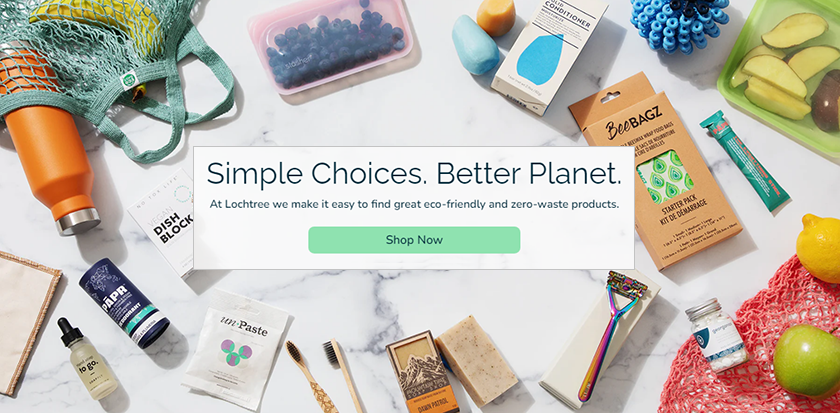
Gardening has always been about nurturing life, but traditional gardening practices can sometimes create unnecessary waste. From plastic pots to chemical fertilizers, the environmental footprint of modern gardening is larger than it seems. Zero-waste gardening offers a greener alternative—one that reduces waste, saves money, and creates a thriving garden ecosystem.
Contents
Start with Sustainable Tools and Supplies
Gardening often involves a variety of tools and supplies, but many of these are made from non-recyclable plastic or are designed for single use. Here’s how to choose eco-friendly options that last.
Invest in Durable Tools
Choose high-quality gardening tools made from metal and wood rather than plastic. Stainless steel trowels and pruners with wooden handles may cost more upfront, but they last for years and can often be repaired if damaged.
- Look for tools with replaceable parts, like blades or handles, to extend their life.
- Check thrift stores or garage sales for secondhand tools—it’s both budget-friendly and sustainable.
Skip Single-Use Plastics
Many gardening supplies, like seed trays and plant pots, are made from disposable plastic. Instead, try these alternatives:
- Use biodegradable seed trays made from coconut coir or recycled paper.
- Repurpose household items, like egg cartons or yogurt cups, as seed starters.
- Opt for terracotta pots, which are natural, reusable, and break down harmlessly if discarded.
Composting: The Heart of Zero-Waste Gardening
Composting is a cornerstone of zero-waste gardening, transforming kitchen scraps and yard waste into nutrient-rich soil. It’s nature’s way of recycling, and your garden will thank you for it.
Set Up a Compost System
There are many ways to compost, depending on your space and needs:
- Traditional Compost Piles: Great for large yards, these piles require a mix of greens (like food scraps) and browns (like leaves) to break down properly.
- Compost Bins: Ideal for smaller spaces, bins keep compost contained and can speed up decomposition.
- Vermicomposting: A worm-powered method that works well indoors and produces nutrient-packed castings.
Composting Tips
Keep your compost balanced by alternating layers of greens and browns. Avoid adding meat, dairy, or oily foods, as these can attract pests. And don’t forget to turn the pile regularly to aerate it and speed up the process.
Reuse and Repurpose Materials
One of the best ways to reduce waste in the garden is by finding creative uses for items that would otherwise be thrown away.
DIY Plant Supports
Instead of buying plastic stakes or trellises, use what you have on hand:
- Old broomsticks or wooden dowels make excellent stakes for tall plants.
- Use fallen branches to create a natural, rustic trellis.
- Repurpose old metal bed frames or ladders for climbing plants like beans or cucumbers.
Upcycled Planters
Almost anything can become a planter with a little creativity. Try these ideas:
- Old boots or shoes for small flowers or succulents.
- Discarded wooden crates lined with burlap for herbs or vegetables.
- Broken teapots or chipped mugs for whimsical indoor plants.
Sustainable Watering Practices
Water is one of the most precious resources in gardening, and conserving it is key to sustainability. Here’s how to keep your garden hydrated without waste.
Collect Rainwater
Installing a rain barrel is a simple way to capture runoff from your roof and use it to water your plants. This reduces your dependence on municipal water and saves money on your water bill.
Water Wisely
- Water early in the morning or late in the evening to minimize evaporation.
- Use drip irrigation or soaker hoses to deliver water directly to the roots.
- Mulch around plants to retain moisture and reduce the need for frequent watering.
Reuse Household Water
“Greywater” from activities like rinsing vegetables or cooking pasta can be used to water plants—just make sure it doesn’t contain soap or harsh chemicals.
Grow Your Garden Sustainably
The plants you choose and how you grow them can make a big difference in your garden’s environmental impact. Here are tips for eco-friendly plant care.
Opt for Native Plants
Native plants are adapted to your local climate and soil conditions, which means they require less water and fewer resources to thrive. They also provide essential food and shelter for local wildlife, like pollinators.
Practice Companion Planting
Companion planting involves growing plants together that benefit each other, reducing the need for synthetic fertilizers and pesticides. For example:
- Marigolds repel harmful insects and can be planted alongside vegetables.
- Basil enhances the flavor of tomatoes and deters pests like aphids.
- Beans fix nitrogen in the soil, benefiting crops like corn and squash.
Avoid Synthetic Chemicals
Skip synthetic fertilizers and pesticides in favor of organic options. Compost, manure, and natural pest control methods like neem oil or diatomaceous earth are effective and eco-friendly.
Embrace Biodiversity
A thriving garden is one that supports a wide variety of life. By encouraging biodiversity, you create a balanced ecosystem that reduces the need for human intervention.
Create Wildlife Habitats
Welcome beneficial insects, birds, and other wildlife to your garden:
- Plant a mix of flowering species to attract pollinators like bees and butterflies.
- Install a birdhouse or provide a shallow dish of water for birds.
- Leave a small brush pile or log to create shelter for small mammals and insects.
Say Goodbye to “Perfect” Lawns
Lawns are resource-intensive and often rely on chemical inputs to maintain their appearance. Replace part of your lawn with native plants, wildflowers, or a vegetable garden. It’s less work, better for the environment, and far more rewarding.
Sowing the Seeds of Sustainability
Zero-waste gardening isn’t just good for the planet—it’s good for your wallet and your peace of mind. By composting, reusing materials, conserving water, and supporting biodiversity, you can grow a garden that’s as sustainable as it is beautiful. Whether you’re a seasoned gardener or just starting out, these tips will help you cultivate a greener future, one plant at a time.

